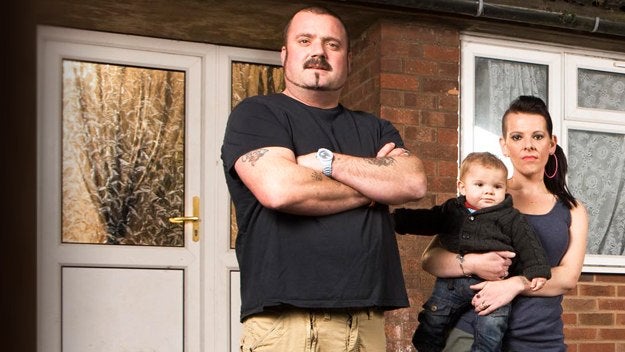
Your support helps us to tell the story
From reproductive rights to climate change to Big Tech, The Independent is on the ground when the story is developing. Whether it's investigating the financials of Elon Musk's pro-Trump PAC or producing our latest documentary, 'The A Word', which shines a light on the American women fighting for reproductive rights, we know how important it is to parse out the facts from the messaging.
At such a critical moment in US history, we need reporters on the ground. Your donation allows us to keep sending journalists to speak to both sides of the story.
The Independent is trusted by Americans across the entire political spectrum. And unlike many other quality news outlets, we choose not to lock Americans out of our reporting and analysis with paywalls. We believe quality journalism should be available to everyone, paid for by those who can afford it.
Your support makes all the difference.A few years ago, the BBC ran a programme called Skint, a thoughtful and touching account of life on the breadline, its characters yo-yoing back and forth to Cash Converters, as they juggled their meagre assets to make it to the next benefit payment. It humanised the very poor and made it harder for viewers to caricature them as merely workshy or feckless.
Skint on Channel 4 feels different, though it isn't immediately easy to say why. Part of the problem is a general one. How should the poor be represented on television? Do they exist only as a social problem, penned into the segregated area of earnest documentary? On the other hand, how do you stop the reporting of the very poor from turning into a condescending voyeurism? One way to start, I would have thought, is to prevent your programme from looking like a non-fiction version of Shameless.
Channel 4's Skint does exactly the opposite. "Ah, Scunthorpe!" says a jaunty voice over the introductory montage, summoning memories – quite deliberately – of David Threlfall's opening rhapsody about the Chatsworth Estate. In the case of Skint, we're on the Westcliff Estate, but there's a flat-roofed pub, called the Desert Rat, and there's even a reverse crane shot of the precinct it sits in, just to underline the similarities. Outside, "the wall" provides a meeting place for Westcliff's drinkers and drug takers, one of them characterfully wearing a dressing gown as daytime leisure wear. They are, collectively, a Daily Mail dream – lairy, unabashed, bent on mayhem.
Then there's Dean, spinnaker-bellied, blisteringly foul-mouthed and living in a household so vigorously blended that his partner can't easily keep track of which kids are which. Dean, it turns out, has a pretty forceful work ethic. "Why should I give you pocket money for doing fuck all?" he asks a 10-year-old, as indignant as any tabloid opinionator about the something-for-nothing culture. Skint doesn't actively mock Dean. It doesn't make him jump through hoops in some reality format or snigger at his lifestyle in an obvious way. But it does enjoy him and leaves you wondering whether that enjoyment is entirely seemly.
Things are much less complicated with Kieron, an addict and shoplifter whose 12-step rhetoric about getting clean is tragically undercut by the fact that his speech is so slurred by drugs that you can barely understand it. At one point, a little mystifyingly, Keiron smokes a rock of crack to demonstrate to the film-makers how sad people who smoked crack were. He would have done it anyway, camera or no camera. But it felt unclean to watch.
The Story of Now replicated in its structure a familiar feature of its subject. As several people pointed out in this mildly entertaining history of the Now That's What I Call Music! compilation albums, record companies would sometimes only release the rights to a big hit if the compilers took a couple of sleepers off their hands as well. The result was a mix-tape that had tunes everyone could whistle along too and quite a bit of ho-hum stuff that no one had ever heard of. Ditto, The Story of Now, assembled in the manner of those clip-show nostalgia fests that sandwich the funny bits with a commentary by celebs, essentially saying "What was all that about then?" in a variety of different ways.
Some of them are good value (Dom Joly and, dare I say it, Dermot O' Leary), while some of them are only there to pad the thing out to the full hour (Mark Wright doing a very good Barry Shitpeas impersonation). And, much like Now That's What I Call Music!, you leave these things on because however mediocre the current track, there's a fair chance that something more interesting will come along in a couple of minutes.
Join our commenting forum
Join thought-provoking conversations, follow other Independent readers and see their replies
Comments